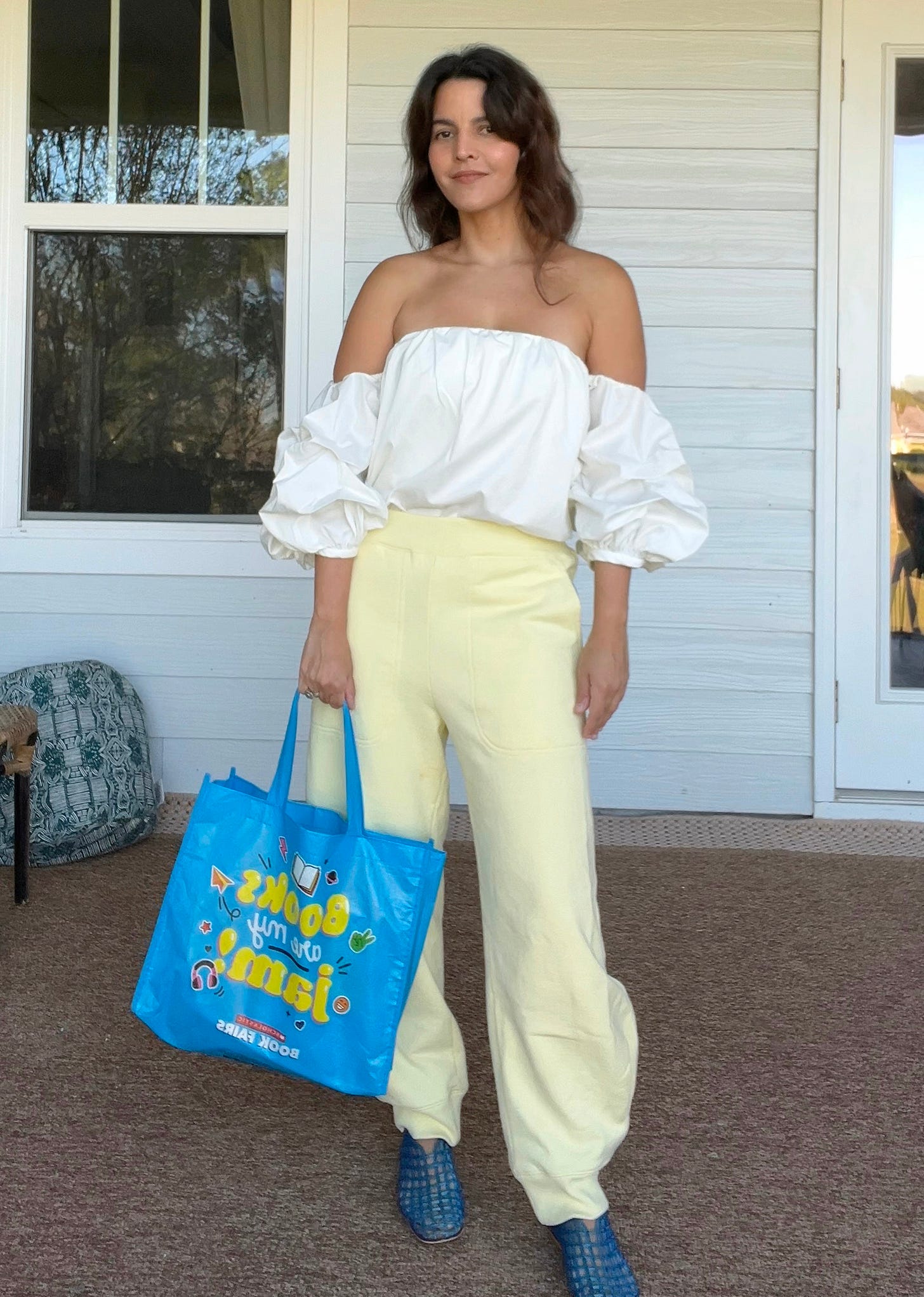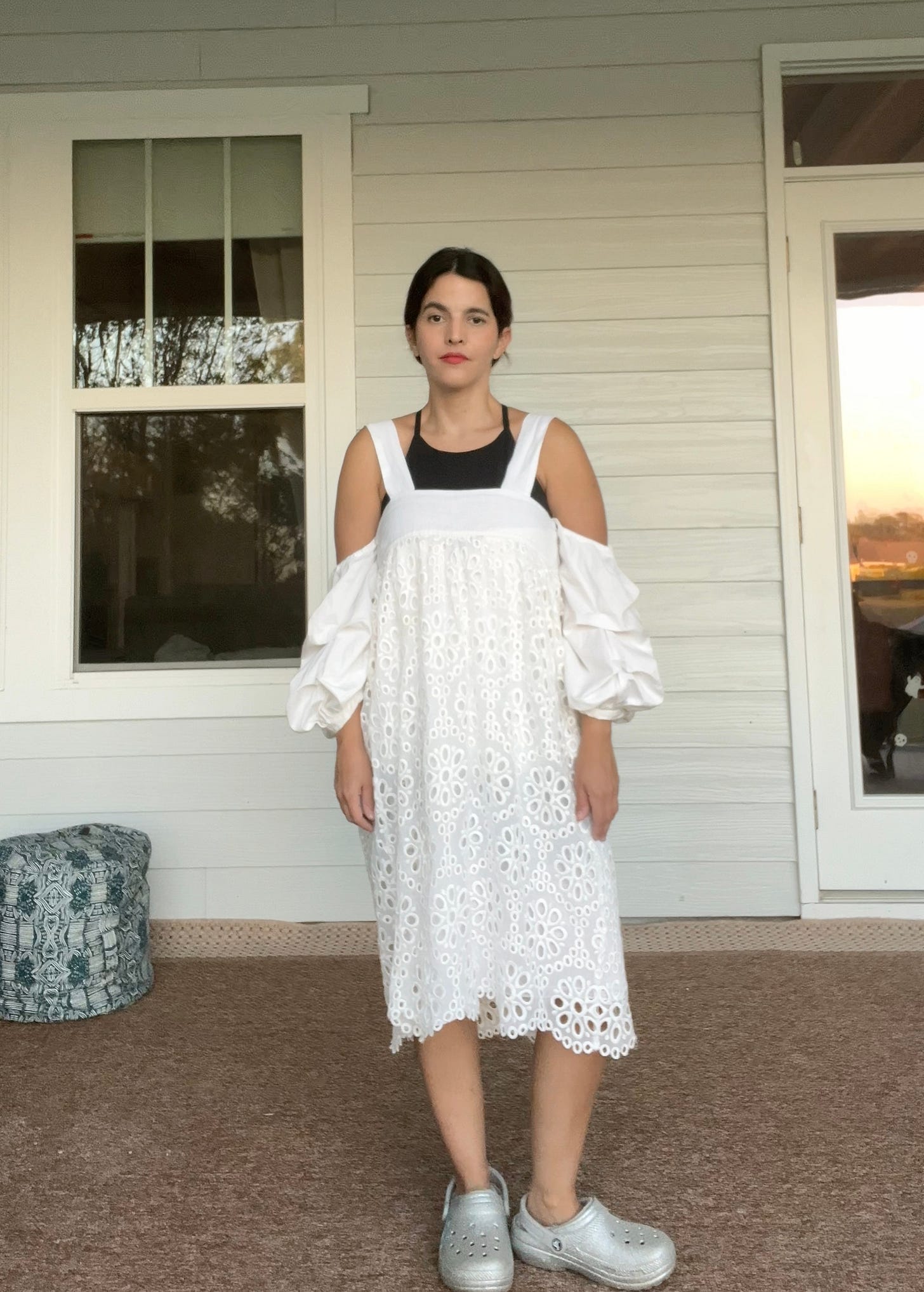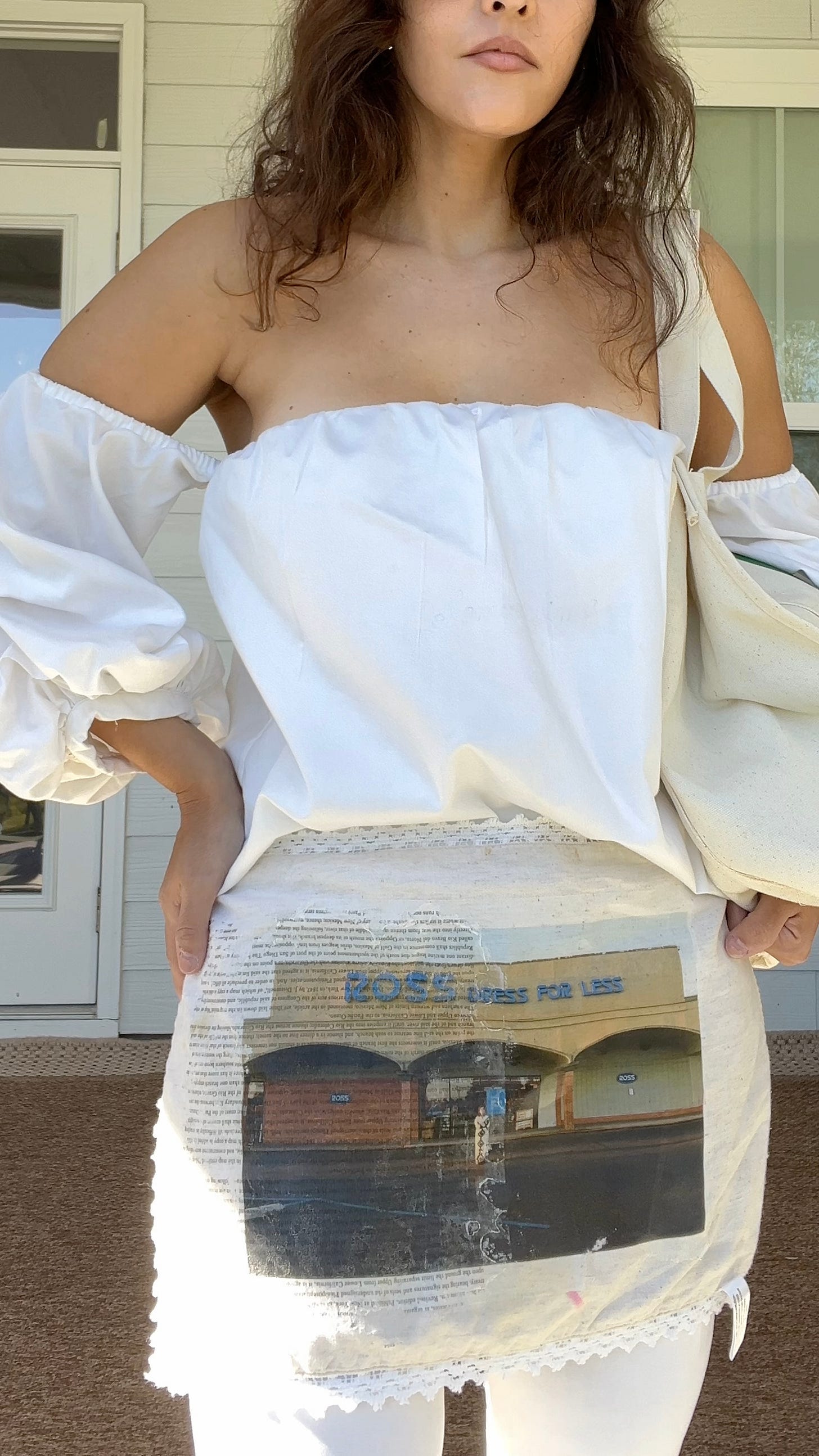Fashion as a constant act of forgetting.
revisiting Johanna Ortiz' off-the-shoulder top a decade after its peak popularity.
please open this on the app or browser to get all the content.
On Sunday, I saw an instagram post from Lutz Huelle featuring an off-the-shoulder top styled over a striped shirt that I loved/reposted as it immediately transported me back to 2015, the year that I became a mom but also the year of Johanna Ortiz’s iconic off-the-shoulder “Tulum” top.


The image from Lutz Huelle took me by surprise as I’d spent the last month deep-diving into runway archives, looking at what designers were doing ten years ago in Paris/NY/London/Milan, considering what “timelessness” really means, and assessing how much my taste has evolved over the past decade.
One of the things that happened ten years ago was precisely the frenetic rise of Colombian designers in the international market. Not that fashion didn’t exist in Colombia before 2014, but that year marked a turning point when the gates of Moda Operandi opened wide for Colombian designer Johanna Ortiz. Her meteoric ascent didn’t only mean massive commercial success for her namesake brand and many other Latin American designers who followed in her footsteps, but also solidified an aesthetic—an idea/fantasy of what a Latina woman dresses like and what Latin fashion “is” in the eyes of international buyers and consumers.
Johanna Ortiz’s off-the-shoulder Tulum top was the ultimate signifier of a new, exportable Latinidad: bare shoulders, natural beauty, subtle sexiness, tropical flair, a looseness that was the exact opposite of the “narco-aesthetic” also associated with Colombian style. At the time, I loved the Tulum top and celebrated the success of Johanna Ortiz, all while navigating what it meant for me to dress like a Latina woman in NYC, questioning whether “Latinidad” was being emptied of its complexity and reduced to the ruffles and florals endlessly replicated by every other designer and fast fashion brand, and wondering if the whole aesthetic, like the word Latinx, was starting to feel like an imposition: how others expected us to look and dress as immigrant, Latina women.

Fast forward to 2023: the same $650 Tulum top that every it girl wore a decade ago, I scored for $60 on TRR. I bought it, and the reasoning behind the purchase was:
I still found the top objectively beautiful: Even though it didn’t really align with my lifestyle, even though it’s no longer popular—because sometimes our perceptions of beauty transcend practicality, trends, or market depreciation. Or maybe it’s because getting such a high-quality piece (it’s beautifully made) for a fraction of its retail price (new with tags) feels like a small rebellion against an ultra-fast fashion industry that pushes trends just to make them obsolete every few months.
I wanted to explore it as a material in my art practice. Which I did, but something was missing:
I wanted to re-signify the Tulum top—wear it, infuse it with my story. Integrate it with different facets of what being a Caribbean woman living in the United States means to me. Re-enter the complexity from which the top was completely emptied (through no fault of its designer.) Insert my narrative, which is as unique as the narrative of many other immigrant women who are constructing their own definitions of being Latina, on their own terms, in 2024, free of what others expect of us, free of idealized and often exoticized versions floating around.
So in today’s edit, I wanted to explore how to wear the Tulum top 10 years after it became popular, in a way that feels true to me— for the stay-at-home mom/artist life I have in a pretty conservative suburb of the U.S. South where, curiously, most American women are now wearing the same ruffles and florals Johanna Ortiz popularized back in 2014.











I’ve always been skeptical of broad generalizations like “Latinidad,” which try to encapsulate vastly different regions, idiosyncrasies, and individualities into a monolithic concept. Maybe what has changed for me in the last 10 years is realizing that my options aren’t limited to dualities like minimalism/maximalism or CaribbeanChic/Normcore. Also that our aesthetics shouldn't be shaped by the expectations or identitarian impositions constructed by others to keep us labeled in boxes. Because the times when identity hasn’t felt restrictive are when I have approached it as a rhizome— when how I dress reflects how my roots have intertwined across the vast expansion of ground they’ve spread over, the spaces I’ve entered, and most importantly, the borders and thresholds of those spaces closed off to me, which I keep crossing in my daily life.










Superb styling of this magnificent top! I like it over the buttoned shirt and with the mesh top over it, and your chartreuse shorts are amazing. Nothing wrong with wearing it 10 years later…I expect to wear my clothes that long (and longer). Your styling challenges the original layer of Latin American identity and gives such a unique vibe. Thank you for sharing this!💕
I often think of the items of clothing that I pined over 10 years ago and I wonder if I would want them/how I would style them now. I am so happy for you that you got the top because it represents more than a shirt you liked in 2015.